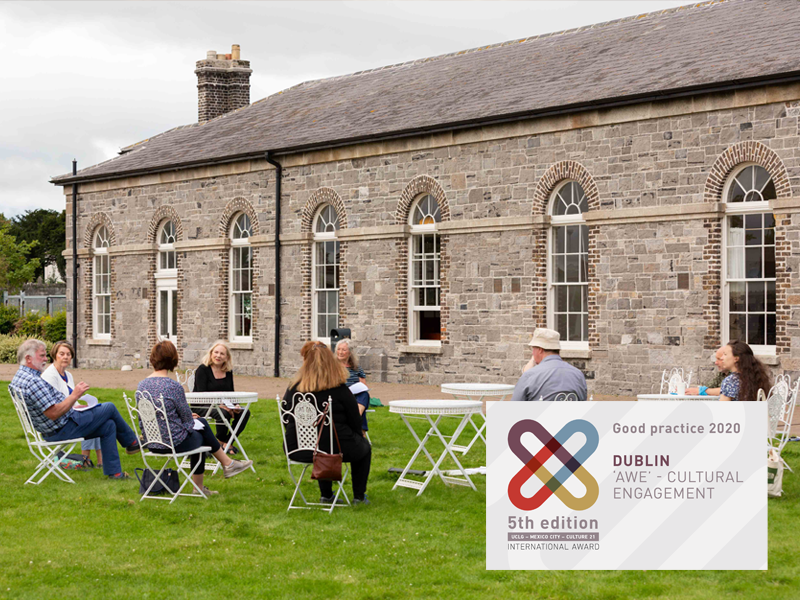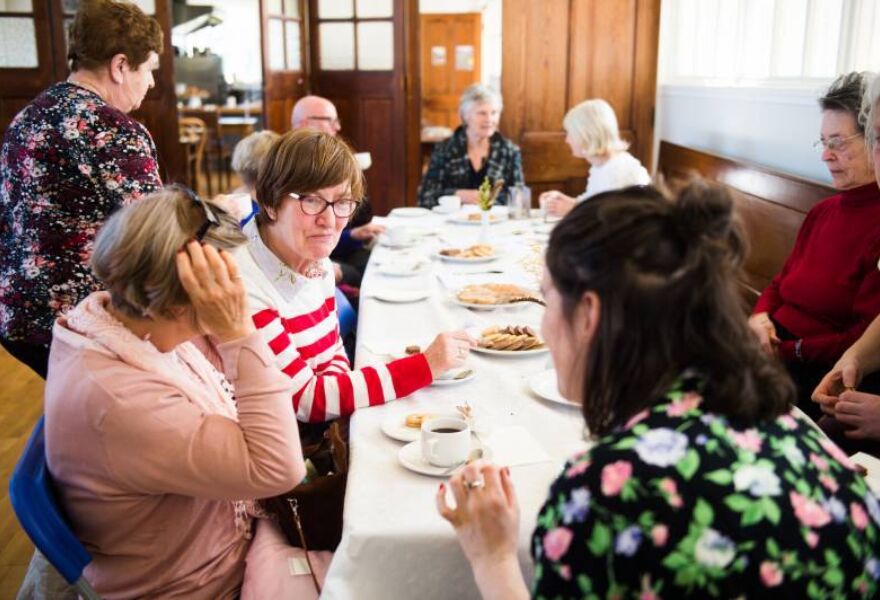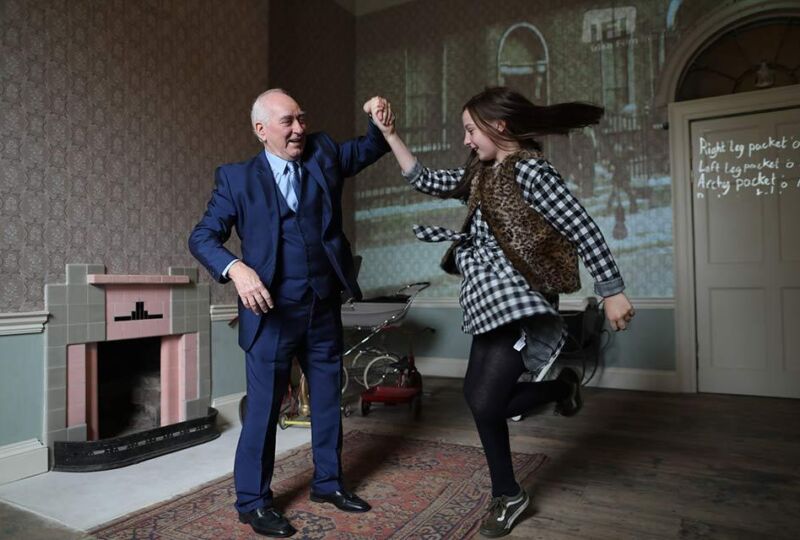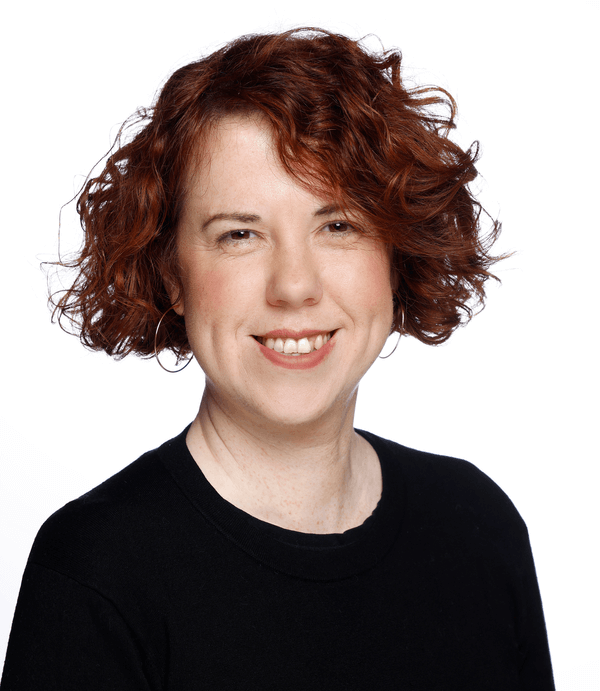 - © UCLG Committee on Culture / AWE Dublin
- © UCLG Committee on Culture / AWE Dublin - © Dublin City Council Culture Company
- © Dublin City Council Culture Company - © Mark Stedman / Dublin City Council Culture Company
- © Mark Stedman / Dublin City Council Culture Company - © Julien Behal / Dublin City Council Culture Company
- © Julien Behal / Dublin City Council Culture Company
City
Dublin
Main actors
City Government
Project area
Whole City/Administrative Region
Duration
Ongoing since 2020
AWE is a cultural engagement project based on accessibility, wellbeing, and evidencing of outcomes, initiated as a sustainable response to the challenges of Covid-19 and how this was affecting cultural rights and our ability to connect, converse and create. For citizens who participated, AWE impacted on how connected they felt to their neighbourhood and their city, and the places where culture happens.
This study case is based on a good practice provided by the City of Dublin and promoted by the UCLG Committee on Culture. The original document can be found here.

International Award UCLG - Mexico City - Culture 21
This project was awarded the 'International Award UCLG - Mexico City - Culture 21' in 2022 in the following category: City / Local or Regional Government.
In 2018, Dublin City Council established the Culture Company, indicating its intent to foster cultural participation and cultural rights. The Culture Company’s mission is to engage with people and communities through conversation and culture, aiming at increasing cultural participation and practice throughout the city’s neighbourhoods and operating some of the municipal cultural infrastructure.
The Culture Company builds on the work of Dublin’s Culture Connects (2016-2018), an initiative which trialled cultural participation programmes, recognised by the UCLG Culture Award with a special mention in 2018.
The pandemic necessitated a re-examining of how people participate in culture and with our projects. We did this through a lens of cultural rights and asked a set of questions about cultural access and participation. As cultural activity moved almost exclusively online, we also asked ‘who is being left behind?’ We were acutely aware that some people became heavily burdened with caring responsibilities or perhaps were themselves being cared for in a clinical or home setting, compounded now by isolation.
In 2022, the City Development Plan 2022-2028 started to be implemented. Culture sits as a key function alongside its sustainable action plans for quality housing and neighbourhoods, planning, environmental, infrastructure, shape and structure, regeneration, built heritage and archaeology, movement and transport.
For us, the pandemic necessitated a re-examining of how people take part in our projects and programmes. We did this through a lens of cultural rights.
We strive to work in a way that builds capacity and cultural confidence, connecting people to culture who usually don’t see themselves as involved, while recognising that people are already doing ‘culture’ in their own way.
We ensured better access to our existing offerings by increasing the frequency and times. For example, we began lunchtime sessions for those working from home, and made content available ‘on demand’ so people could watch afterwards.
We also offered digital skills support in the form of one-to-one engagement with people who needed additional support with using a device, accessing the internet and using Zoom. We worked with our partners in SMART Dublin to provide free tablets and Wi-Fi to those who needed it.
Our mission is to connect people and communities through culture and conversation, to ignite imaginations and experiences. We know that when people feel connected to their communities, they feel safer, stronger, and are healthier.
Based on this, we looked at how cultural participation and connection might support wellbeing at a time when people’s mental and physical health were being challenged by the effects of Covid-19.
We ran a creative engagement project with groups and individuals in the city for Winter Lights. The concept is simple but powerful - art made for the people of Dublin, by the people of Dublin. We brought groups of city residents together and paired them with an artist. Together, they created large, collaborative light artworks for five public buildings of the City.
We worked closely with four groupings of people, including an over-55’s movement group – which were perhaps the most affected by the pandemic – a community education group, a grouping of individuals sourced from open call, and a grouping of residents from two nursing homes in an area of south-central Dublin. With each group, we listened to their interests, wishes and stories to help bring them to life.
At all times we were guided by the needs and interests of residents, most of whom were not just cocooning from the outside world but also isolating from other residents and confined to their rooms. Working closely with their Activity Coordinators, we worked in a slow and responsive way, hosting one-to-one relaxed conversations with residents, allowing the sharing of memories of Christmas times gone by or stories of Dublin life. This developed into a large outdoor projection of the residents’ stories, animated and lighting up City Hall Dublin. The animation was also made into a graphic short story in print and video.
Dublin City Council has provided a stable environment for the development of this work through the formation of the Culture Company. Our governance structure further stabilises the company’s objectives. Our board, made up of independent experts with sectoral knowledge alongside Council executives and elected members, embeds us within the everyday workings of the municipality.
The continuity of the work is further supported by an initial three-year funding commitment and service level agreement with the Culture Company, which allows for long term planning and development of lasting, impactful programmes. The Council’s commitment to the continuation of this work can be further evidenced by the recent transfer of the operation of the further existing and new cultural infrastructures in the city that the company might engage with in the future - all based on us running and developing them with our people-first approach to culture and heritage.
Some of the impacts on local government
- Dublin City Council is now the only local authority in Ireland with a culture company delivering through methodologies based on cultural participation and cultural rights.
- Citizen-led consultation and co-creation are seen within the Council as effective mechanisms to engage and empower people.
- Citizens are supported to have sustainable partnerships with the City Council, culture and cultural institutions, building cultural confidence.
Some of the impacts on culture and cultural actors
- Work more collaboratively, bringing in different specialised skills in community engagement and existing neighbourhood networks.
- Trust the outcomes of our open consultation process, engagement is continuous throughout the year and is the bedrock of our programmes.
- We are a testbed for cultural ideas. We partner with cultural organisations, education and business sectors not traditionally engaged in culture, to grow the city’s cultural ecosystem.
- Create space for cultural experimentation, increasing cultural confidence in participants, and partners
- Feedback has consistently spoken of increased sense of place, transformative relationship to their local environment and energy to continue this momentum into other aspects of daily life.
Assessment
We have developed a framework that embeds evaluation into our processes to evaluate our company strategy and respond in our programming. We also learn from others, by consulting and collaborating widely through steering groups, advisory panels, citizen consultation. We extract learnings to incorporate into ongoing projects development and responsive programming
Evaluation data collected includes:
- Evaluations, feedback, and impact on experiences from participant, artist, audience, and partners.
- Demographics and geographic reach
Key indicators include:
- Cultural values - tolerance, inclusiveness, social cohesion, creativity, and innovation.
- Changes in how citizens respond to social, cultural, and technological change.
Key Factors
We continually invite a broad representation of people (participants, partners, artists, and local authority teams) to give their views on their experiences of our projects. There is no hierarchy in how the responses are treated or their intrinsic value to us.
The common assets identified in our collaborative methodology are the people, skills and experience of the Culture Company. Furthermore, we consistently support learning and quality of experience for participants in a genuine, receptive, and enabling process.
The implementation of the Culture Company’s policies such as accessibility or inclusion are delivered with adequate resourcing for budgetary provision, planning, and learning from other organisations with additional skills. There is also an understanding that such policies have an impact and implementation mechanism through all departments within the Company.
At the end of 2021, the unemployment rate in Dublin was 5.4%. The at-risk poverty rate in Dublin was 11.1% and whilst lower than the national average of 12.8%, rising inflation, fuel and living costs will have a crucial impact in 2022 and beyond. Continued chronic housing shortages and rising rents impact the city daily.
In 2021, the Culture Company undertook a Research Study on the work of Dublin City Council in cultural participation and the impact for the people involved. The Study sought to find out what lessons we can learn about active engagement from participants, Council staff and external expertise from their firsthand experiences.
The Study allowed us to better understand the impact of active citizenship and find ways to measure this in the work of the City Council. It added qualitative data insight to the vast quantitative information about participation already available, to show the full impact of participation to the people involved. The importance of this work is evidenced within the impact and outcomes of individual AWE projects and programmes.
On Map
The Map will be displayed after accepting cookie policy

